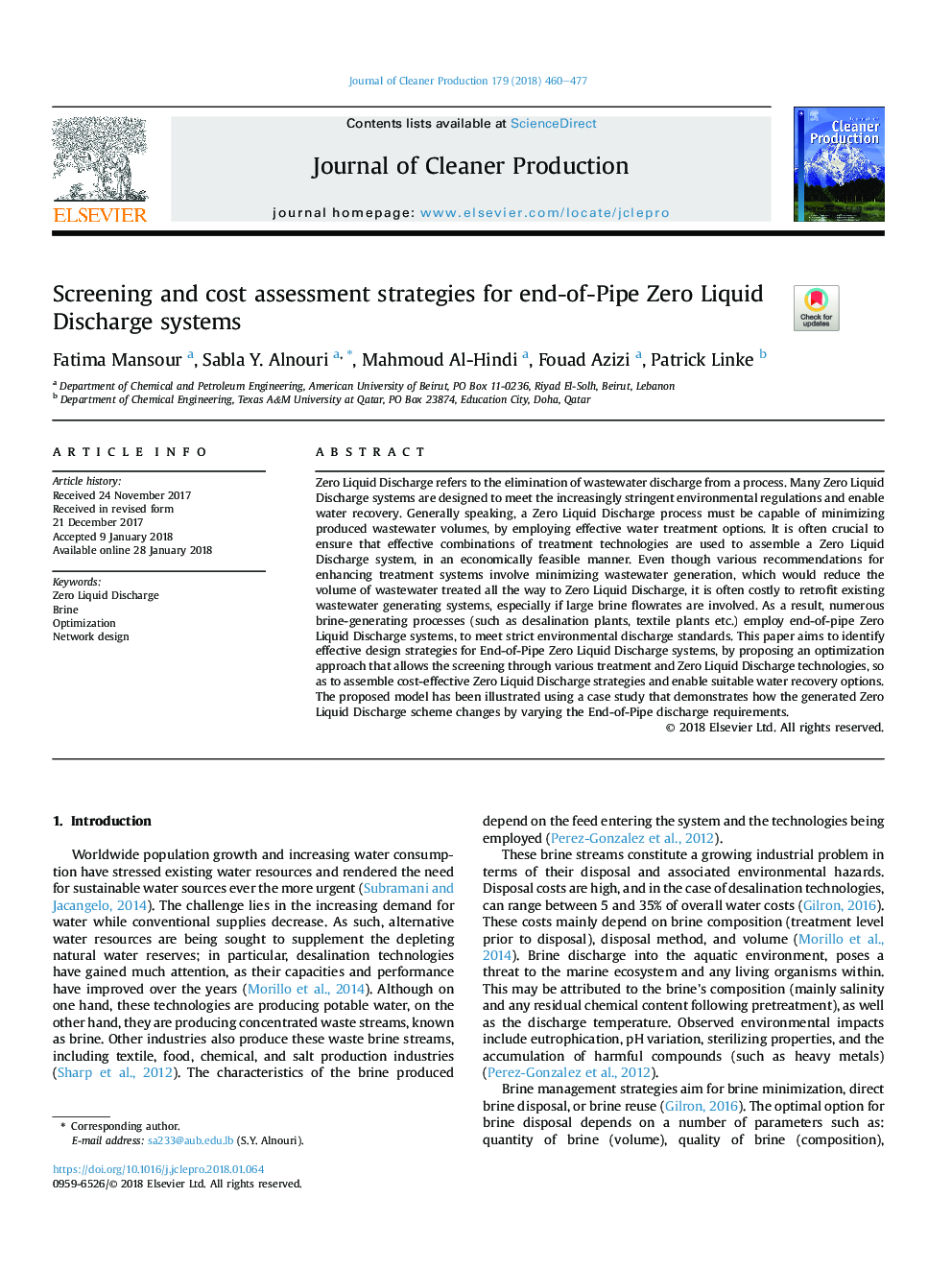| Article ID | Journal | Published Year | Pages | File Type |
|---|---|---|---|---|
| 8098253 | Journal of Cleaner Production | 2018 | 18 Pages |
Abstract
Zero Liquid Discharge refers to the elimination of wastewater discharge from a process. Many Zero Liquid Discharge systems are designed to meet the increasingly stringent environmental regulations and enable water recovery. Generally speaking, a Zero Liquid Discharge process must be capable of minimizing produced wastewater volumes, by employing effective water treatment options. It is often crucial to ensure that effective combinations of treatment technologies are used to assemble a Zero Liquid Discharge system, in an economically feasible manner. Even though various recommendations for enhancing treatment systems involve minimizing wastewater generation, which would reduce the volume of wastewater treated all the way to Zero Liquid Discharge, it is often costly to retrofit existing wastewater generating systems, especially if large brine flowrates are involved. As a result, numerous brine-generating processes (such as desalination plants, textile plants etc.) employ end-of-pipe Zero Liquid Discharge systems, to meet strict environmental discharge standards. This paper aims to identify effective design strategies for End-of-Pipe Zero Liquid Discharge systems, by proposing an optimization approach that allows the screening through various treatment and Zero Liquid Discharge technologies, so as to assemble cost-effective Zero Liquid Discharge strategies and enable suitable water recovery options. The proposed model has been illustrated using a case study that demonstrates how the generated Zero Liquid Discharge scheme changes by varying the End-of-Pipe discharge requirements.
Related Topics
Physical Sciences and Engineering
Energy
Renewable Energy, Sustainability and the Environment
Authors
Fatima Mansour, Sabla Y. Alnouri, Mahmoud Al-Hindi, Fouad Azizi, Patrick Linke,
